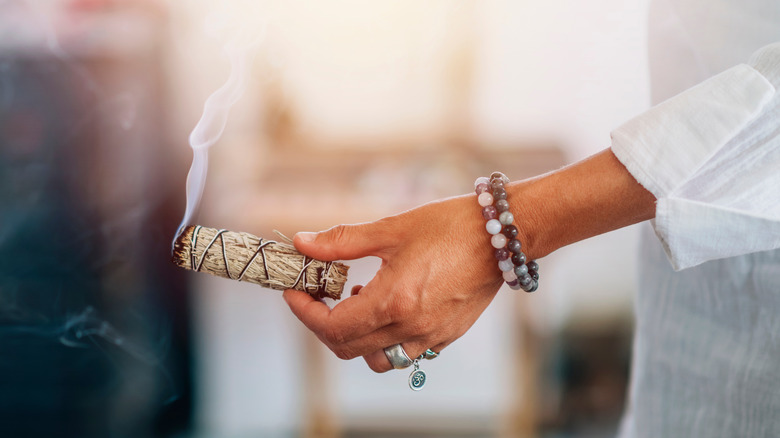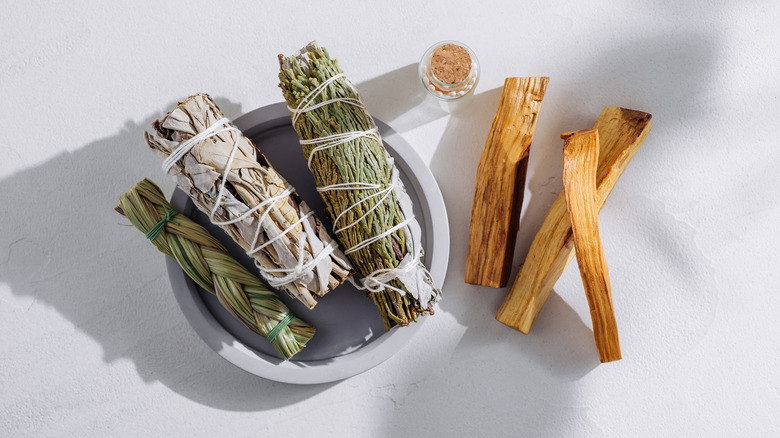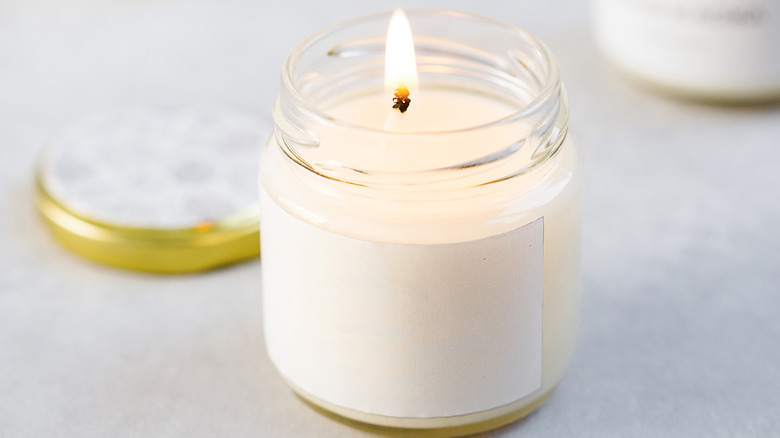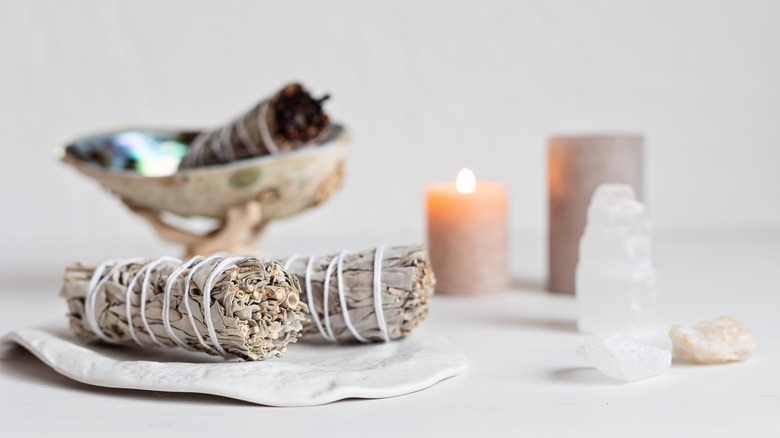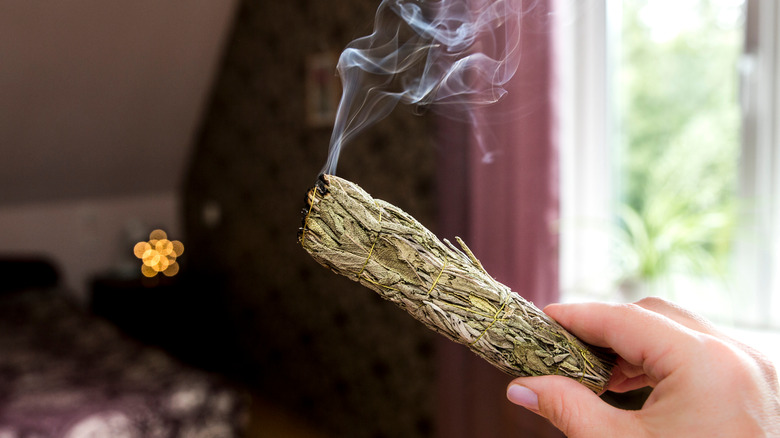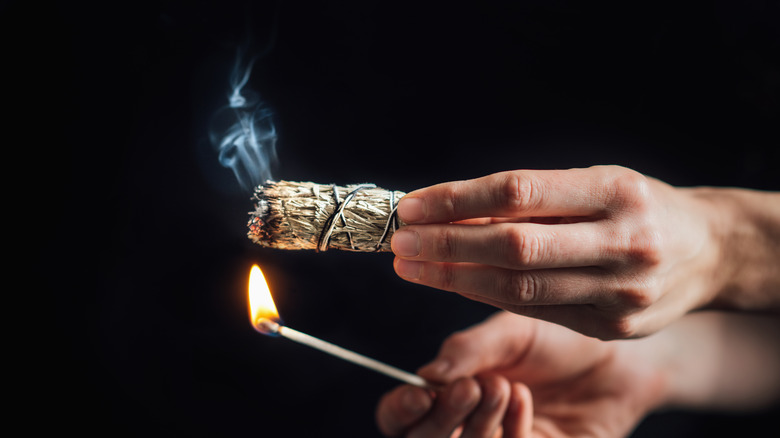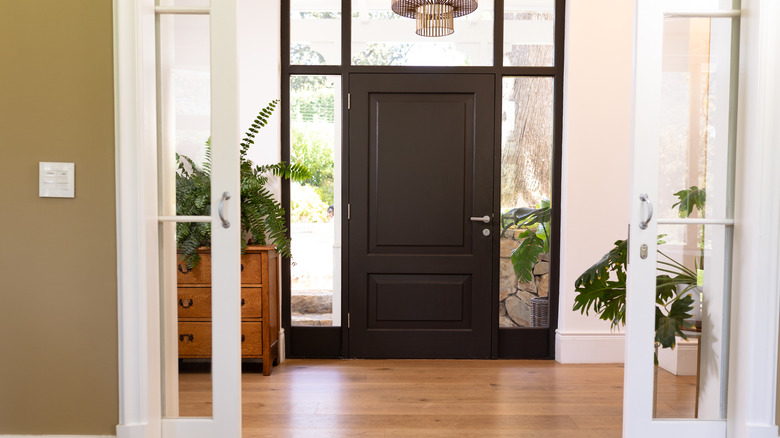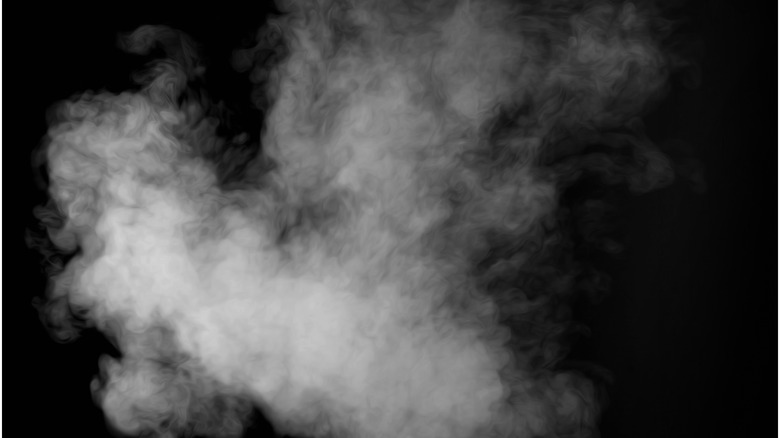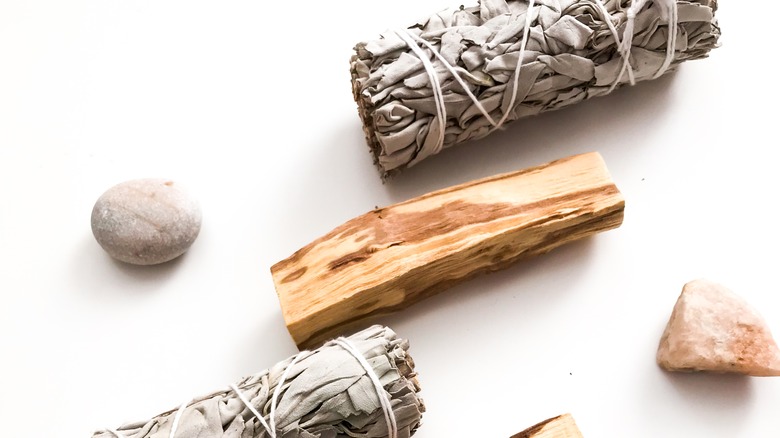How To Smudge Your Space For Calming, Positive Vibes
The crisp, earthy aroma immediately evokes the great outdoors and infiltrates your home with a new energy. Smudging — a spiritual ritual that burns revered substances such as sage, sweetgrass, and cedar — was started long ago by tribal and ancient cultures, according to The Canadian Encyclopedia. The word itself originates from the English "smudge," referring to the practice of igniting blessed herbs and medicines to cleanse and purify an area or person with the resulting vapor. While religious figures, such as shamans, often oversee smudging ceremonies, regular people can conduct their own. The smoke created during the process can remove negative energy and toxins, as well as offer spiritual renewal and protection for their person or home.
The practice of finding positivity and healing through smudging is still used by many cultures, including Native Americans who bundle sage and other sacred plants into sticks, says Subconscious Servant. You can tap into the wonder of smudging easily with these tips.
Choose a smudging herb
The first step in smudging is to decide what material to burn. Native American ceremonies often use three main types: sage, cedar, and sweetgrass. Sage is best for removing negative energies. Cedar is more for blessing or as a way to cleanse an area or person after a sickness. Sweetgrass brings more positive energy into your life. Usually, you want to choose just one herb for your ceremony — multiple ingredients compete for different outcomes. You want to ensure success by focusing on one intent (via Kripalu).
Gather your supplies
Remember, smudging uses mindfulness to achieve your goals, so you want to create a setting before you light up anything. Besides whatever herb you'll burn, you should also have a candle, matches, a fireproof bowl, and some sand. The candle is perfect for lighting the smudge stick. Then you'll also need a receptacle to collect any ashes and a container filled with sand to extinguish the remaining stick. If you are going to smudge regularly, it is good to reserve these supplies just for your sessions (from The Spruce).
Prepare for your ceremony
"The practice of smudging, when done with the right understanding, is a healing ritual," said Shilo and Shawna Clifford, Oglala Lakota tribal members, to Women's Health. With smudging, you should always set an intention. What do you want to achieve? What type of energy are you looking for in your life or space? The Spruce also recommended you have enough time to do smudging properly. You don't want to rush through it. You can even meditate for a few minutes to calm yourself before starting so that you already feel a sense of peace.
Smudging basics
Open a window to keep the smoke at bay. Some believe this also helps impurities leave as they drift outside with the vapor. You should also ensure that pets and others empty the space. Light the herbs with a match or candle. If it catches on fire, blow the flames out. Leaves should smolder, allowing the smoke to rise and cover your body or space. Be sure that the smoke drifts throughout all areas. Catch any ash in your container — many people like using a shell. Extinguish the burning herbs when you feel you're done (via Healthline).
How long should you smudge?
There is no set time for smudging. It depends on your goals. Kripalu, for instance, reported that smudging reduces a room's bacteria count — if the area is treated for an hour. That time requirement might work in a home, but apartment dwellers could disturb their neighbors with that amount of smoke.
You can also use smudging as an aromatherapy technique by putting herbs in a fireproof container so it can burn until the smell lingers in the air, reported Healthline. There are no hard and fast rules regarding time limits. You should do what feels right.
Smudging around the house
When smudging your home, you want the smoke to reach all areas. Start at the front door, and walk around your house — hitting even the easy-to-miss spots like closets and basements. You should smudge your way up and down the stairs as well. This thoroughness in movement is circumambulation, something practiced since ancient times to make a space sacred (from The Spruce). You can travel clockwise (to invite energy in) or counterclockwise (to ask energy to leave) around your house, depending on what your intention requires, said David Laughing Crow.
Risks of smudging
If you practice fire safety, smudging should be a low-risk activity. As with any lit flame, burns and fires can happen, but if you're careful, neither should occur. Never leave the room during the smudging process; you always want to oversee what's happening. You should also double-check that all embers are extinguished when you finish. In case of an emergency, it's a good idea to have water accessible. Those with medical conditions, such as asthma, may become more sensitive to the smoke. Mitigate any potential problems by leaving a window open (as per Healthline).
Medical benefits of smudging
Our homes are full of positive ions from all the electronics we use, according to Natural Living Ideas. Don't let the name fool you — it's not a good thing. Smudging may release negative ions, which can offer calming and uplifting effects. In large concentrations, these ions attach to positive ones, pushing them from the air and away from your lung's pathways. Smudge sticks can also help clean bacteria from the air, according to the Journal of Ethnopharmacology article "Medicinal smokes." Plus, smudging provides a cost-effective method of purifying your space, said Very Well Mind.
Source your herbs responsibly
Some herbs are more available than others. Be careful of choosing the materials you need without contributing to over-harvesting, suggested Brit + Co, which cites white sage as an example of an herb in demand. Instead, you can select alternatives — for example, cedar, juniper, lavender, or sweetgrass can be used in lieu of white sage. You should also be aware of how your herbs were gathered and readied for sale, said MBG Mindfulness. You want to ensure that your smudge stick was created with care and thought.
